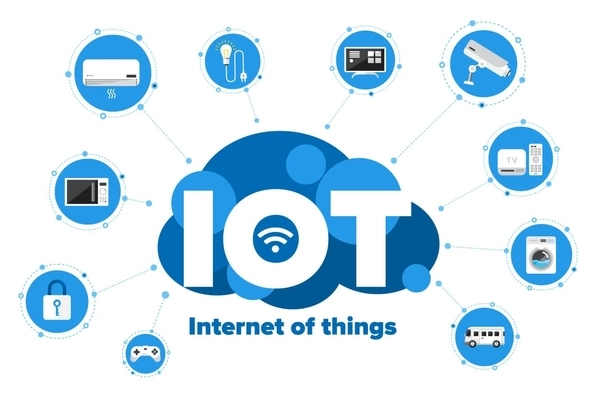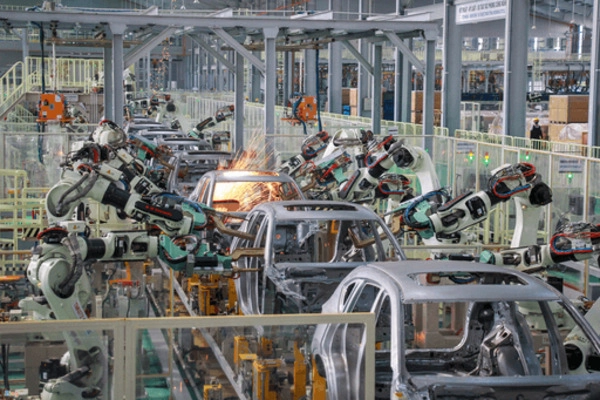In the era of Industry 4.0, IoT Energy Management has become increasingly vital for businesses and manufacturing plants. Efficient energy use not only reduces operational costs but also promotes environmental sustainability and enhances competitiveness. IoT Energy Management offers an advanced solution that allows companies to intelligently monitor, control, and optimize their energy consumption in an automated and smart manner.
What is IoT energy management? How does it work?
IoT energy management refers to the use of smart devices, sensors, and software to monitor, analyze, and optimize energy consumption in factories, buildings, or production facilities. Through the Internet of Things (IoT), the system can collect data from electrical equipment, machinery, HVAC systems, lighting, and other energy-consuming devices.

The operation of an IoT energy management system typically involves three main steps:
- Data collection: IoT sensors installed on machines and equipment capture real-time energy consumption data.
- Data analysis: The collected data is transmitted to a software platform, where AI or intelligent algorithms analyze consumption patterns, identify energy-intensive points, and forecast future energy demand.
- Optimization and control: Based on the analysis, the IoT system can automatically adjust equipment operations, optimize energy usage, reduce waste, and enhance overall operational efficiency.
Thanks to these processes, IoT energy management not only monitors energy consumption but also provides predictive insights and enables proactive optimization measures.
IoT applications in energy management for factories
Modern factories consume large amounts of electricity and energy from multiple sources. Implementing IoT in energy management helps businesses control costs and operate more efficiently. IoT systems in manufacturing environments are typically deployed to:

- Monitoring electricity, water, and fuel consumption across different areas or production lines.
- Automatically adjusting machine operations based on actual demand to prevent energy waste.
- Providing early warnings in case of anomalies or unusual consumption so that staff can respond promptly.
With this data, managers can easily make decisions to improve energy performance, plan equipment maintenance, and enhance the ability to forecast energy needs for each production line.
Benefits of IoT energy management
Implementing IoT-based energy management brings significant advantages to businesses, from cost savings to improved operational efficiency and environmental protection. The key benefits include:

Automating production processes
IoT systems enable the automation of production processes based on actual energy consumption. Instead of relying on manual supervision, the system can automatically adjust machine power levels, switch devices on or off, and optimize operation schedules. This reduces human errors and enhances production efficiency.
Reducing energy consumption and operational costs
By analyzing real-time energy usage, IoT helps identify equipment that consumes excessive energy and recommends optimization measures. As a result, factories can significantly reduce electricity and fuel costs while improving equipment utilization efficiency.
Lowering carbon emissions and protecting the environment
Saving energy directly contributes to reducing carbon emissions and other environmental pollutants. IoT energy management systems help companies implement green strategies, move toward sustainable development, and strengthen their corporate image in the eyes of customers and partners.
Optimizing equipment maintenance and operations
IoT systems can monitor the operating condition of machinery in real time, allowing early detection of wear or potential failures. This supports proactive maintenance planning, prevents unexpected breakdowns, and extends equipment lifespan.
Predicting and planning energy usage effectively
By analyzing historical data and forecasting future energy demand, businesses can plan production more efficiently. IoT helps identify peak consumption periods, enabling adjustments to operational schedules to avoid overload and optimize costs.
Rapid detection and response to energy incidents
When issues arise in electrical systems, equipment, or energy infrastructure, IoT can send immediate alerts. Operators can respond promptly, minimizing damage, preventing downtime, and ensuring continuous production.
Challenges in implementing IoT for energy management
Although IoT-based energy management offers many benefits, deploying it still comes with several challenges:

- High initial investment costs: IoT systems require sensors, management software, and a stable network infrastructure.
- Complex data integration: Factory equipment may use various communication protocols, making it challenging to integrate data for comprehensive analysis.
- Information security risks: Energy data is highly sensitive, and without proper protection, it can expose the business to cybersecurity threats.
- Operational skill requirements: Employees must be trained to effectively use IoT systems—from data collection to analysis and decision-making.
Therefore, businesses need a well-structured implementation strategy, select suitable IoT solutions, and invest in workforce training.
The future of IoT energy management in businesses and factories
In the future, IoT energy management will become a standard in smart factories and modern enterprises. With advancements in artificial intelligence, big data, and cloud computing, IoT systems will become increasingly intelligent, capable of predicting, optimizing, and automating entire energy management operations.

Key emerging trends include:
- Self-learning systems: IoT will be able to automatically adjust operations based on historical data and predicted energy demands.
- Integration of renewable energy: IoT will support the efficient incorporation of green energy sources—such as solar and wind—into production processes.
- Comprehensive digital transformation: IoT-based energy management will be integrated with ERP, MES, and SCM systems, providing a holistic view of business operations and overall energy consumption.
As a result, businesses can not only reduce costs and protect the environment but also enhance competitiveness and meet the demands of smart industry in the era of Industry 4.0.
IoT energy management is a strategic solution that enables modern enterprises and factories to optimize energy usage, reduce costs, protect the environment, and improve operational efficiency. Although implementation may still face challenges such as cost, security, and workforce skills, the long-term benefits it brings are substantial. With the ongoing trend of Industry 4.0, IoT energy management will continue to evolve and become an essential standard for every modern business and factory.
